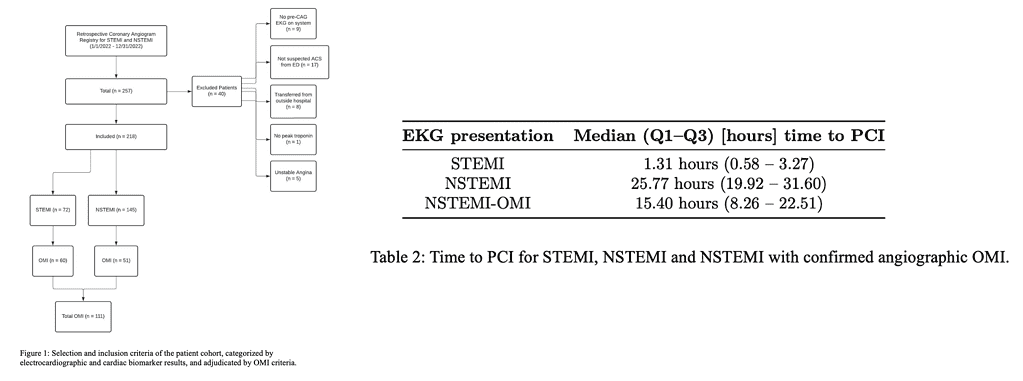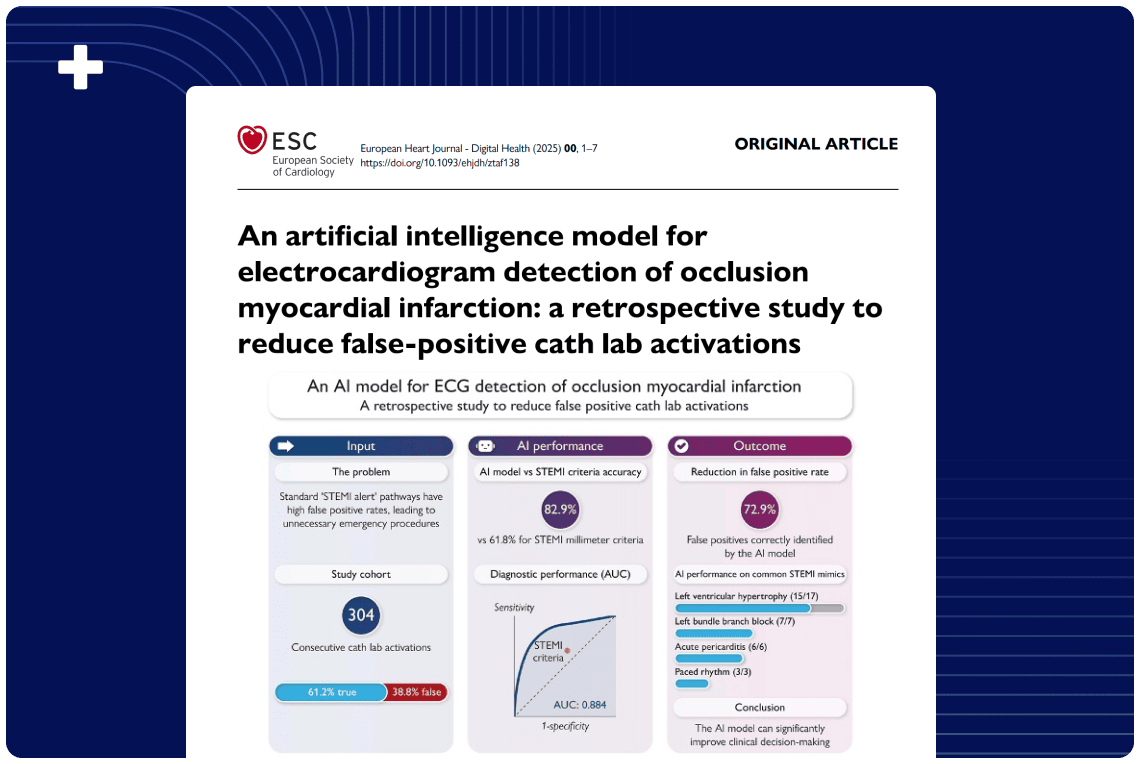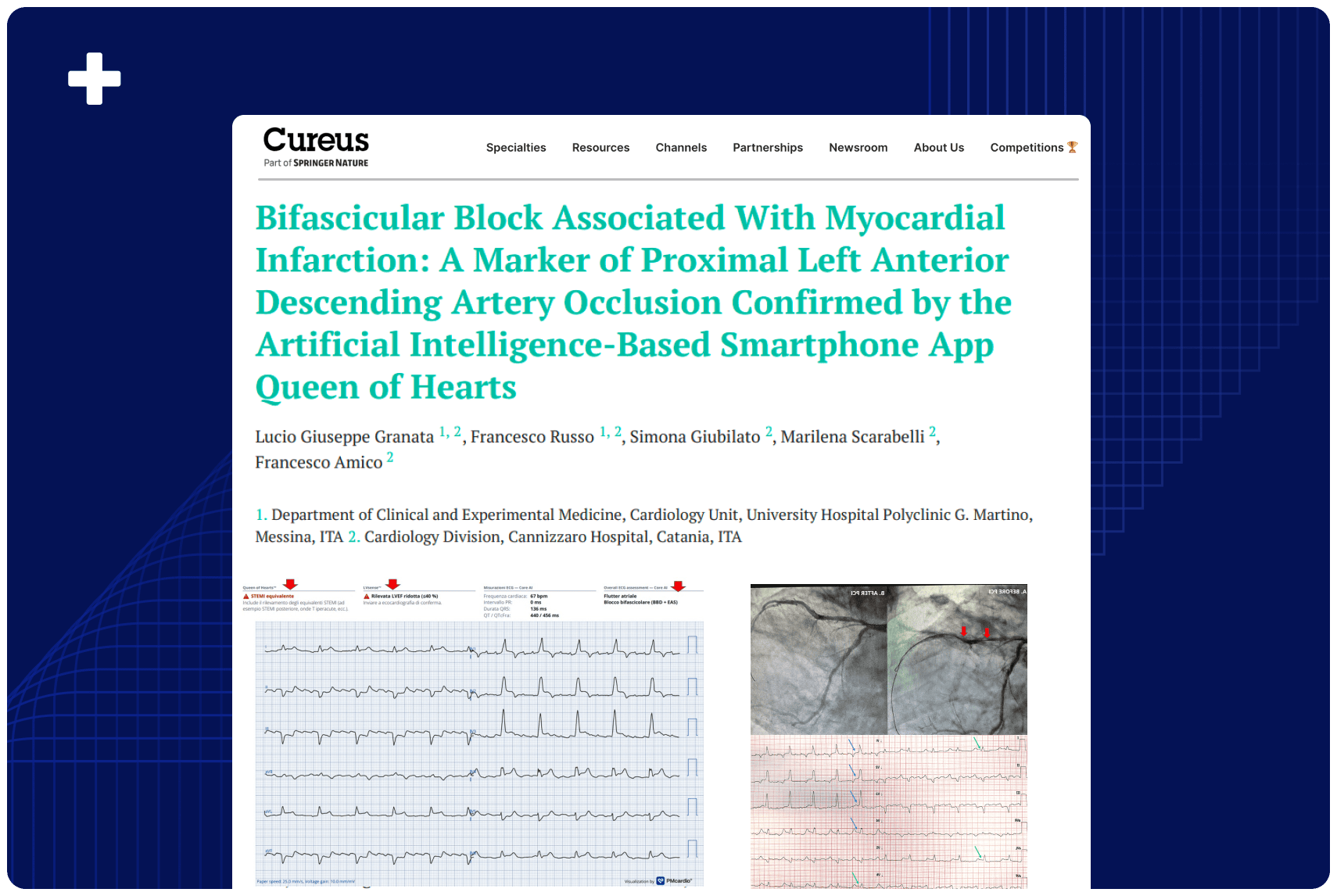Overview
In a one‑year, single‑centre cohort of 217 cath‑lab patients (72 STEMI, 145 NSTEMI), the AERO‑ACS study tested PMcardio’s AI ECG against traditional ST‑elevation rules for detecting angiographic occlusion‑MI. The algorithm matched STEMI sensitivity (86.5 % vs 83.3 %) while raising specificity to 82.2 % (vs 66.0 %), achieved 100 % sensitivity in STEMI cases, and flagged occlusions linked to a 12‑fold higher in‑hospital mortality risk—suggesting more accurate triage with fewer unnecessary activations.
Published in: Coronary Artery Disease
Published on: 25 July 2025
Background
Artificial intelligence (AI) augmentation of ECG assessment has significant potential to improve patient outcomes in acute coronary syndrome.
Methods
We used a 1-year retrospective cohort of angiographic data from patients presenting with ST-elevation myocardial infarction (STEMI) and non-ST-elevation myocardial infarction (NSTEMI). The device analyzed precatheterization ECGs to identify OMI, defined as a culprit vessel with thrombolysis In myocardial infarction (TIMI) 0–2 flow or TIMI 3 flow and peak cardiac troponin I > 10.0 ng/ml.
Results
A total of 217 patients were included: 72 STEMI (32%) and 145 NSTEMI (65%). Angiographic OMI was confirmed in 60 (83%) STEMI and 51 (35%) NSTEMI cases. The AI model achieved a sensitivity of 86.5%, specificity of 82.2%, and an area under the curve of 0.84. Traditional STEMI criteria had a sensitivity of 83.3% and a specificity of 66.0%. The AI model was 100% sensitive in detecting STEMI-OMI. The odds ratio for mortality in AI-detected OMI patients was 12.44 (1.56–98.98), unplanned readmissions 1.15 (0.53–2.51), and reduced ejection fraction at 1 year 0.24 (0.26–2.16).
Conclusion
The AI model demonstrated similar sensitivity but higher specificity than traditional STEMI criteria, improving OMI detection while reducing false positives. These findings suggest potential benefits in triage accuracy and resource utilization, but further prospective validation is needed to determine its clinical impact.
















